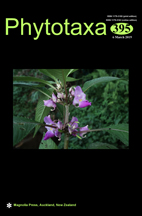Abstract
The Encyonopsis microcephala-complex occurs in oligo-mesotrophic freshwaters and is often abundant in the periphyton of low nutrient lakes of high conservation value. It is globally distributed and increasing in apparent diversity with the discovery of additional species. To better differentiate this taxonomic aggregate, we re-examined the original type material of E. alpina, E. angusta and E. tavirana with light (LM) and scanning electron (SEM) microscopy. We investigated the morphology, ultrastructure and ecology of Encyonopsis populations from Ireland, which included previously unreported taxa and morphodemes of E. krammeri, E. neerlandica and E. subminuta. The apparently cosmopolitan E. microcephala was not found in collections from Ireland but two new species were described and compared to others in the complex. Encyonopsis carraensis sp. nov. was associated with a marl-precipitating community in low nutrient lakes, while Encyonopsis hibernica sp. nov. occurred in more productive waterbodies. Several Encyonopsis species had environmental optima near the oligo-mesotrophic boundary characteristic of the microcephala-complex. However, the niches of others were distributed along a wider gradient of water quality. Therefore, when Encyonopsis populations are prevalent in epilithic communities, the use of a more refined taxonomy is recommended for lake ecological assessment.

